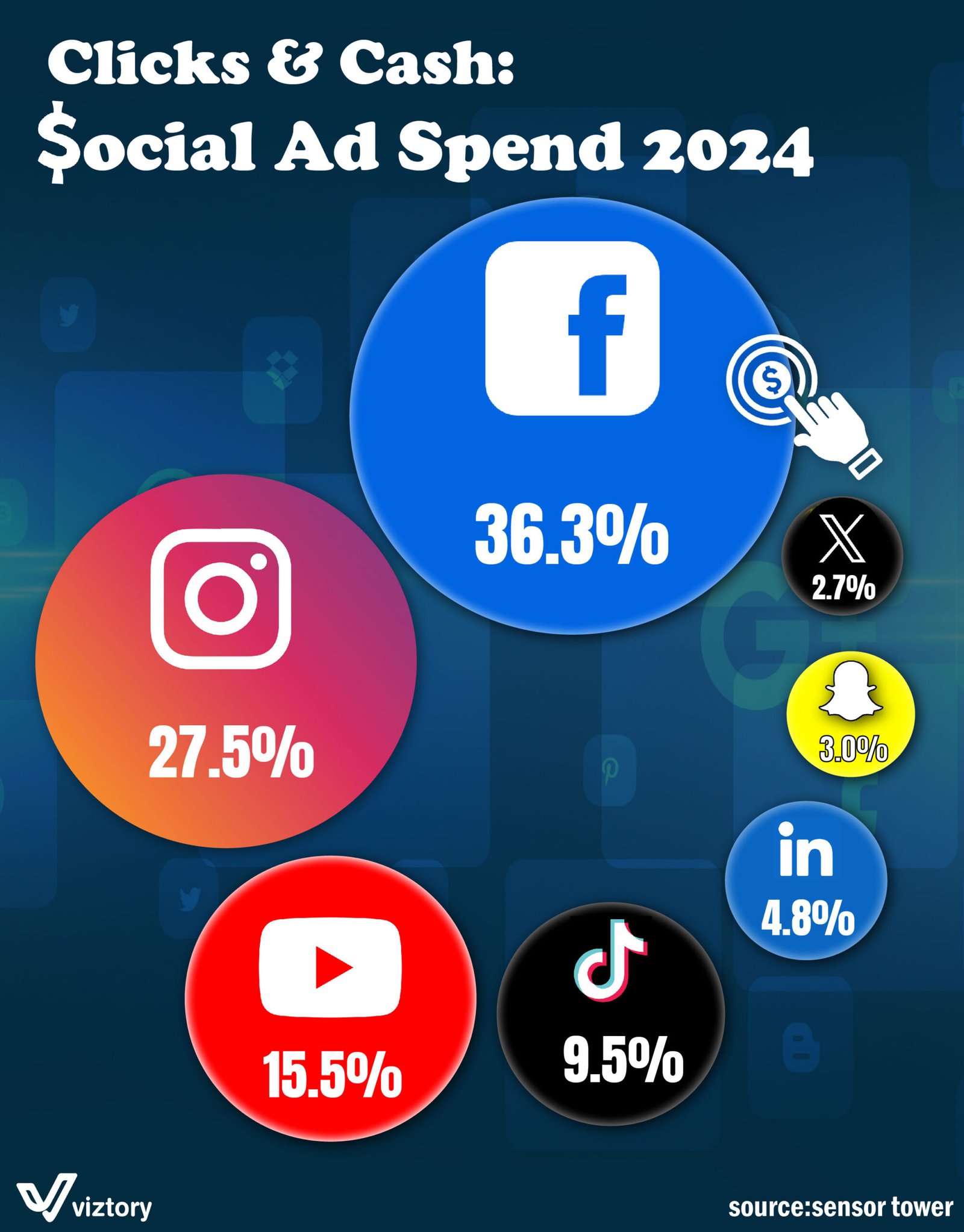Clicks & Cash: $ocial Ad Spend 2024
-
Feb, Sat, 2025
In 2024, social media continues to dominate the advertising landscape, with platforms leveraging their massive user bases and advanced algorithms to capture the lion’s share of ad spend. According to Sensor Tower, Facebook leads the pack with a commanding 36.3% share, demonstrating its enduring relevance despite stiff competition. Instagram follows closely at 27.5%, reflecting its success in combining visual appeal with targeted advertising.
The Rise of Social Media Advertising
Social platforms have revolutionized how brands connect with their audiences. By harnessing AI-driven insights, businesses can now target their ideal customers with precision. Facebook’s leadership stems from its unparalleled data capabilities, offering advertisers detailed audience segmentation. Similarly, Instagram capitalizes on its highly visual nature and engaging formats, such as Stories and Reels, to attract advertisers.
Shifting Dynamics Among Platforms
YouTube claims 15.5% of ad spend, proving the power of video in storytelling and consumer engagement. TikTok, at 9.5%, continues its meteoric rise with short-form video content that resonates with younger audiences. Meanwhile, LinkedIn (4.8%) positions itself as the go-to platform for B2B advertising, and Snapchat (3.0%) retains appeal among younger demographics. Despite its recent challenges, X (formerly Twitter) holds a 2.7% share, showcasing the platform’s niche but dedicated advertising audience.
The Role of Technology in Ad Spend
Technology is the backbone of this advertising evolution. AI algorithms optimize ad placements, while machine learning predicts consumer behavior, ensuring maximum ROI for advertisers. Furthermore, advancements in augmented reality (AR) and virtual reality (VR) are unlocking immersive ad experiences, particularly on Instagram, Snapchat, and TikTok.
What This Means for Advertisers
The diversification of ad spend highlights the need for brands to adopt a multi-platform strategy. Each platform offers unique advantages: YouTube for long-form content, TikTok for viral trends, LinkedIn for professional outreach, and Facebook and Instagram for comprehensive audience engagement. Advertisers must stay informed about technological advancements and consumer preferences to maximize impact.
Conclusion
As the digital advertising space grows more competitive, technology will remain the key to unlocking success. Platforms that adapt to changing consumer behavior and integrate innovative technologies will lead the charge in shaping the future of social media advertising.
Sources:
- Sensor Tower Data, 2024

